Begonia Solenia, a vibrant and captivating member of the begonia family, stands out for its unique qualities and stunning appearance. This begonia species, scientifically classified under the Begoniaceae family, adds a burst of color and elegance to gardens and indoor spaces.
Begonia Solenia Origins and Background
Originating from tropical regions, particularly South America, Begonia Solenia has adapted to thrive in a variety of climates. Its resilience and versatility make it a popular choice for plant enthusiasts seeking a lively addition to their collections.
Key Features of Begonia Solenia:
- Flower Variety: Known for its abundant and diverse flowers, Begonia Solenia blooms in various hues, including shades of red, pink, and orange.
- Compact Growth: With a compact growth habit, Begonia Solenia is ideal for both ground planting and container gardening.
- Long Blooming Period: Enjoy an extended blooming period, as Begonia Solenia produces flowers generously throughout the growing season.
- Foliage Characteristics: The foliage is often glossy, adding to the overall appeal of the plant even when it’s not in bloom.
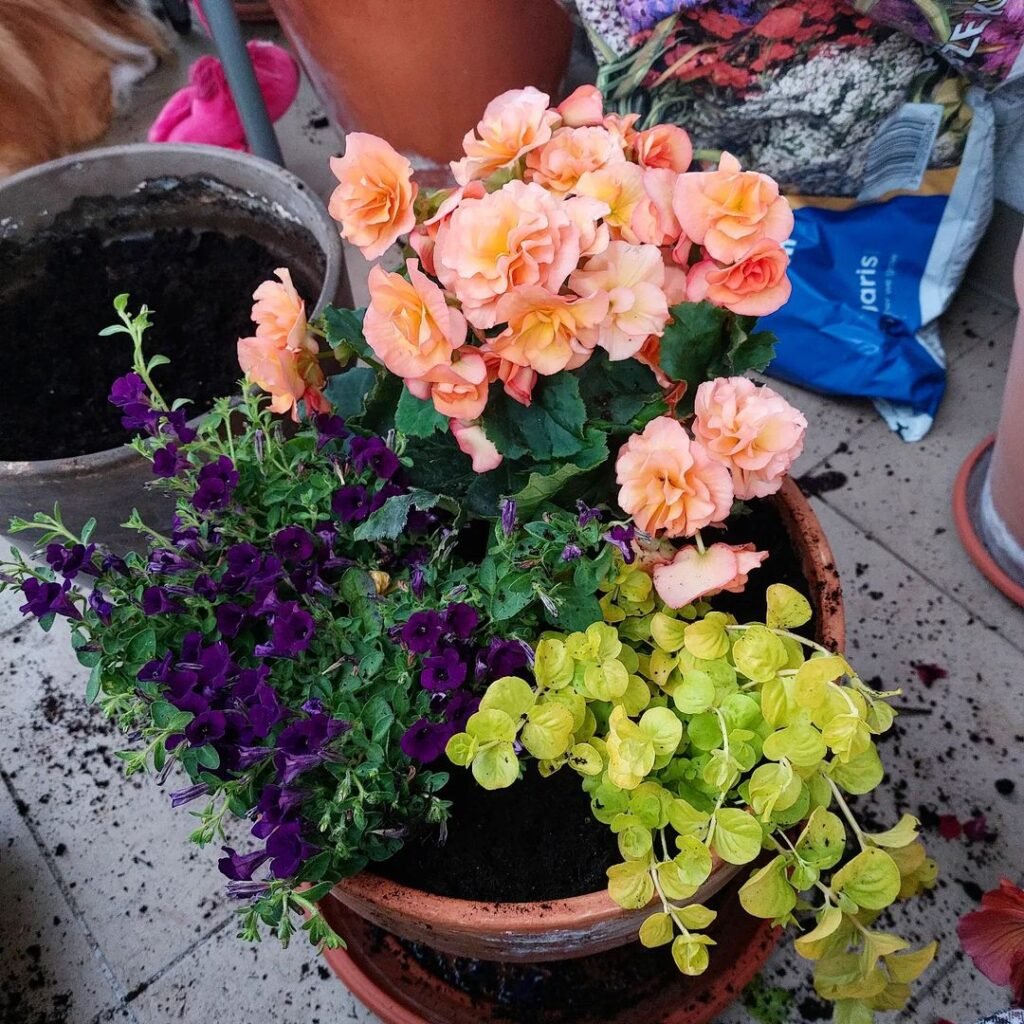
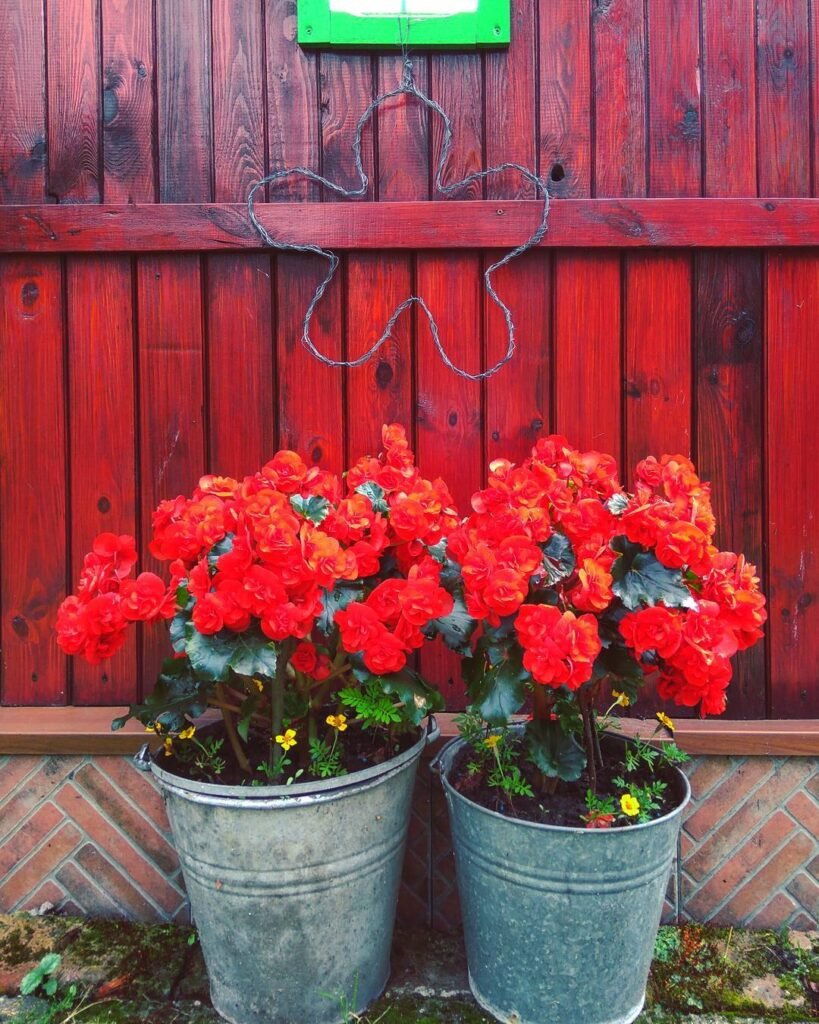

Genus Species
Understanding the broader classification of Begonia Solenia within the plant kingdom provides valuable insights into its characteristics and care requirements.
Begonia Genus Overview
Begonia, a vast and diverse genus comprising over 1,800 species, belongs to the family Begoniaceae. These plants showcase an array of shapes, sizes, and colors, with Begonia Solenia standing out for its striking flowers and compact growth.
Begonia Solenia Classification
Let’s delve into the specific classification of Begonia Solenia:
- Kingdom: Plantae
- Division: Angiosperms
- Class: Eudicots
- Order: Cucurbitales
- Family: Begoniaceae
- Genus: Begonia
- Species: Solenia
Understanding this classification not only highlights Begonia Solenia’s botanical relationships but also aids in tailoring care practices to its unique traits.
Begonia Solenia Appearance
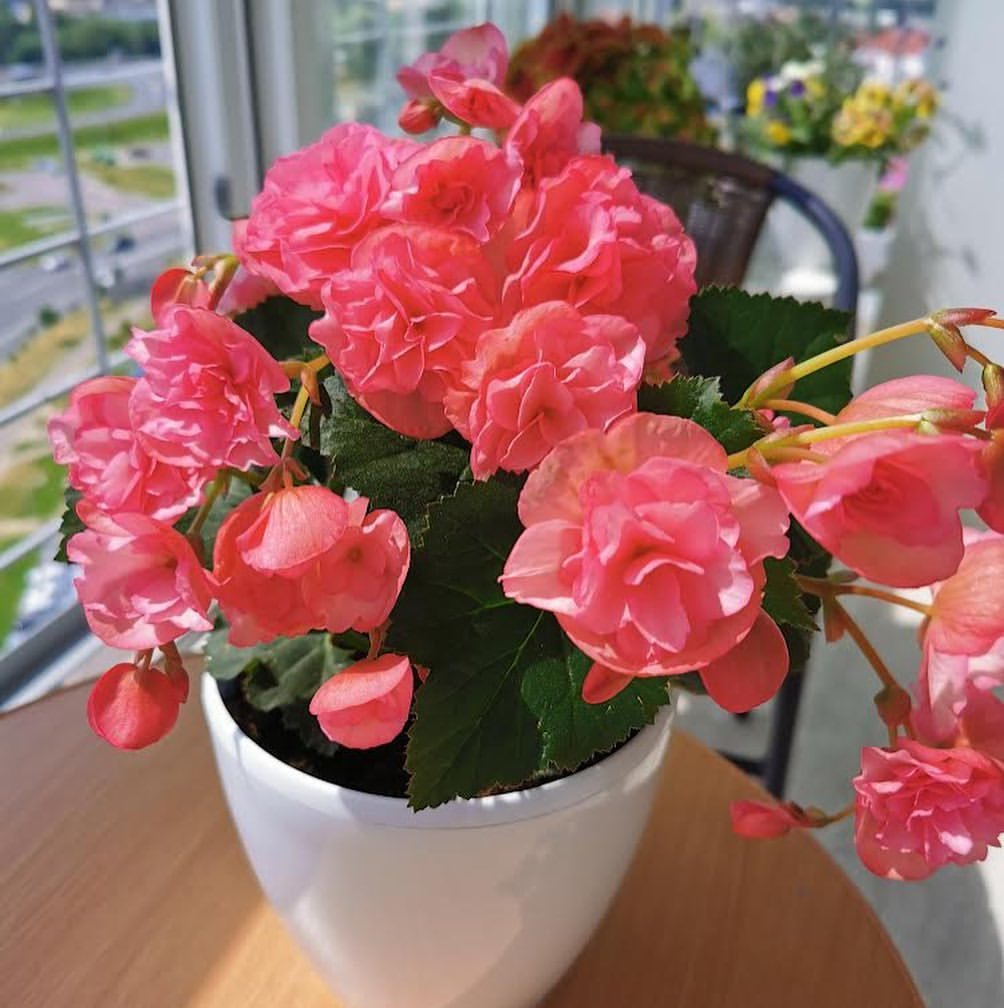
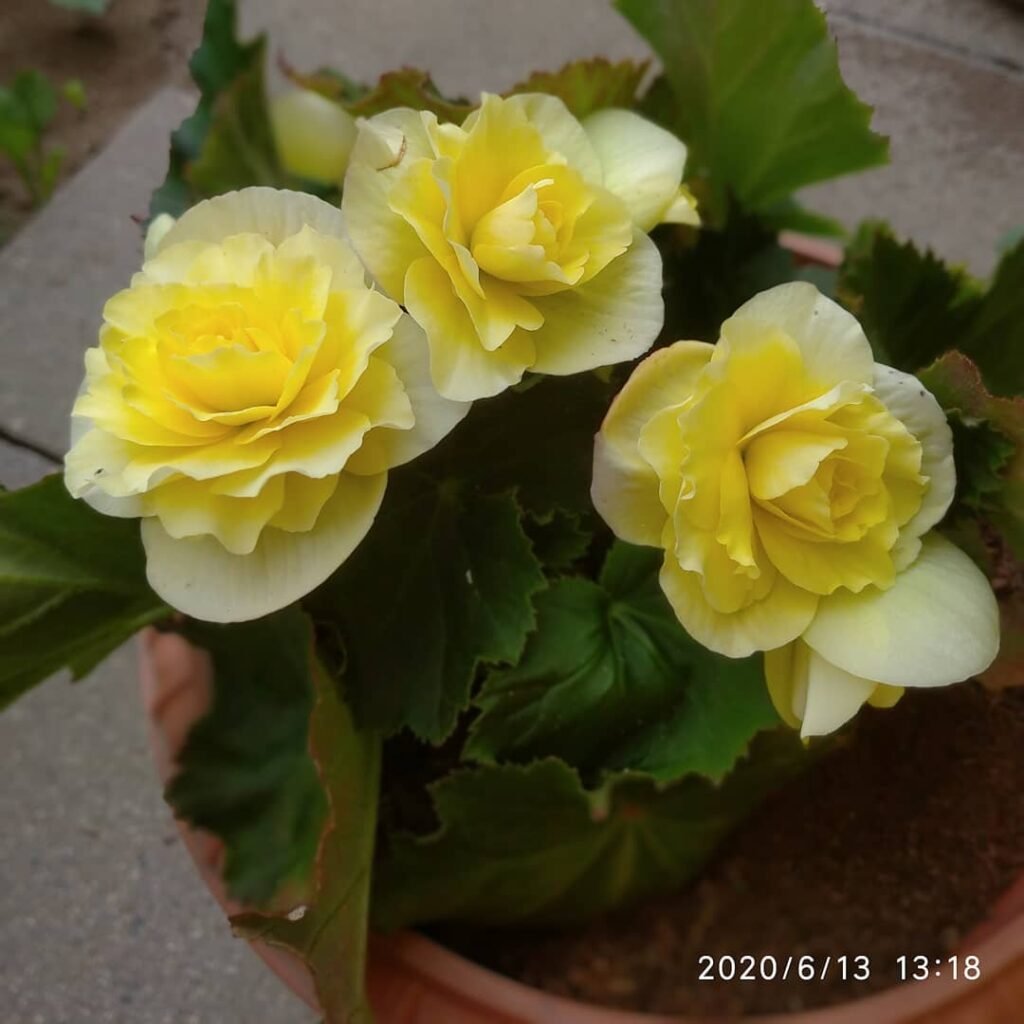
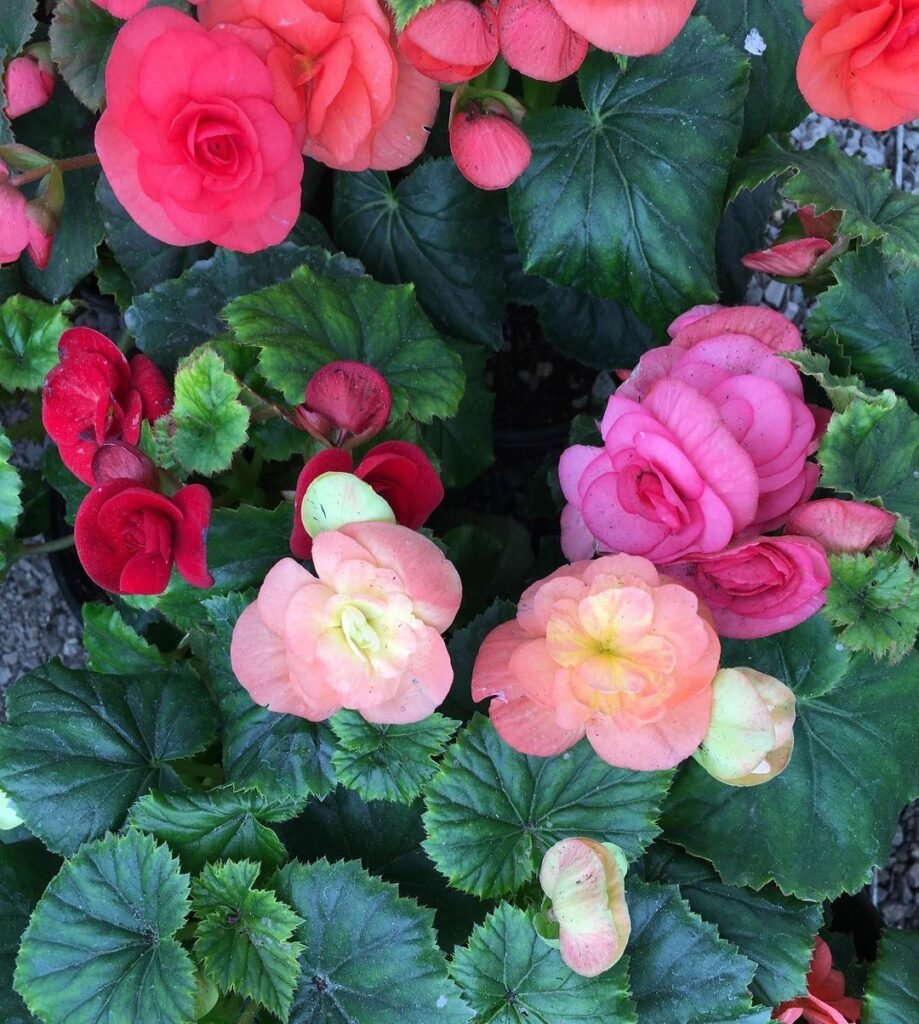
The allure of Begonia Solenia lies in its vibrant colors, distinctive foliage, and compact form. Let’s explore the key visual aspects that make this begonia a standout choice for plant enthusiasts.
Striking Flowers
Begonia Solenia is renowned for its eye-catching flowers that come in various shades, ranging from rich reds to soft pinks and warm oranges. The flowers are often large and abundant, creating a visually stunning display during the growing season.
Blooming Tips:
- Encourage prolific blooming by providing ample sunlight.
- Deadhead spent flowers regularly to promote continuous flowering.
Compact Growth Habit
One of the defining features of Begonia Solenia is its compact growth habit. This makes it an excellent choice for both ground planting in flower beds and container gardening on patios or balconies.
Container Gardening Tips:
- Use well-draining soil to prevent waterlogging in containers.
- Place containers in locations with bright, indirect light for optimal growth.
Glossy Foliage
In addition to its vibrant flowers, Begonia Solenia often boasts glossy foliage that adds to its overall attractiveness. The leaves are typically lush and green, providing a beautiful backdrop to the colorful blooms.
Foliage Care Tips:
- Wipe the leaves gently with a damp cloth to remove dust.
- Avoid wetting the foliage excessively to prevent fungal issues.
Seasonal Variations
Begonia Solenia is known for its ability to maintain its visual appeal across seasons. While the flowers steal the show during the growing season, the glossy foliage ensures year-round interest in your garden or indoor space.
Seasonal Care Tips:
- Adjust watering and fertilization during the dormant period.
- Provide extra care during blooming seasons for an abundance of flowers.
Incorporating Begonia Solenia into your plant collection brings a burst of color and visual delight, making it a rewarding choice for both novice and experienced gardeners.
Not the plant for you? Check out my full list of 78 Types of Begonia!
Begonia Solenia Care Tips
Ensuring the optimal care for your Begonia Solenia is essential for its health and stunning display. Here’s a quick overview of key care tips presented in a handy table:
Begonia Solenia Care Overview
| Aspect of Care | Guidelines |
|---|---|
| Light Requirements | Provide bright, indirect light. Begonia Solenia thrives in filtered sunlight but can tolerate lower light levels. |
| Soil Type | Use well-draining, fertile soil. A mix of peat, perlite, and organic matter ensures proper aeration and moisture control. |
| Watering Frequency | Keep soil consistently moist. Water when the top inch of soil feels dry, and avoid waterlogging to prevent root rot. |
| Temperature Range | Maintain temperatures between 65°F to 75°F (18°C to 24°C). Protect from drafts and sudden temperature fluctuations. |
| Humidity Levels | Moderate to high humidity is beneficial. Consider using a humidity tray or misting the plant regularly. |
| Fertilizing Schedule | Feed with a balanced liquid fertilizer every 4-6 weeks during the growing season. Reduce frequency in the dormant period. |
| Pruning Needs | Trim leggy stems and remove spent flowers to encourage bushier growth and continuous blooming. |
| Propagation Tips | Propagate through stem cuttings. Ensure each cutting has at least two nodes and place in a well-draining rooting medium. |
| Repotting Frequency | Repot young Begonia Solenia plants annually to refresh soil and provide more space. Mature plants can be repotted every 2-3 years. |
| Seasonal Care | Adjust watering and fertilization based on seasons. Increase care during blooming periods and reduce in the dormant phase. |
By following these care guidelines, you’ll create an environment that allows your Begonia Solenia to thrive and showcase its vibrant blooms and glossy foliage.
Begonia Solenia Light and Soil Requirements
Ideal Lighting Conditions
Begonia Solenia, originating from tropical regions, thrives in bright, indirect light. While it can tolerate lower light levels, providing ample, filtered sunlight enhances the vibrancy of its flowers and overall health.
Lighting Tips:
- Filtered Sunlight: Position your Begonia Solenia in an area with filtered sunlight. Avoid direct sunlight, especially during the peak of the day.
- Observing Plant Response: Monitor the plant’s response to light conditions. If leaves appear pale, it might indicate a need for more light. If they scorch, consider adjusting to a shadier location.
- Indoor Placement: If kept indoors, place your begonia near east or west-facing windows for optimal light exposure.
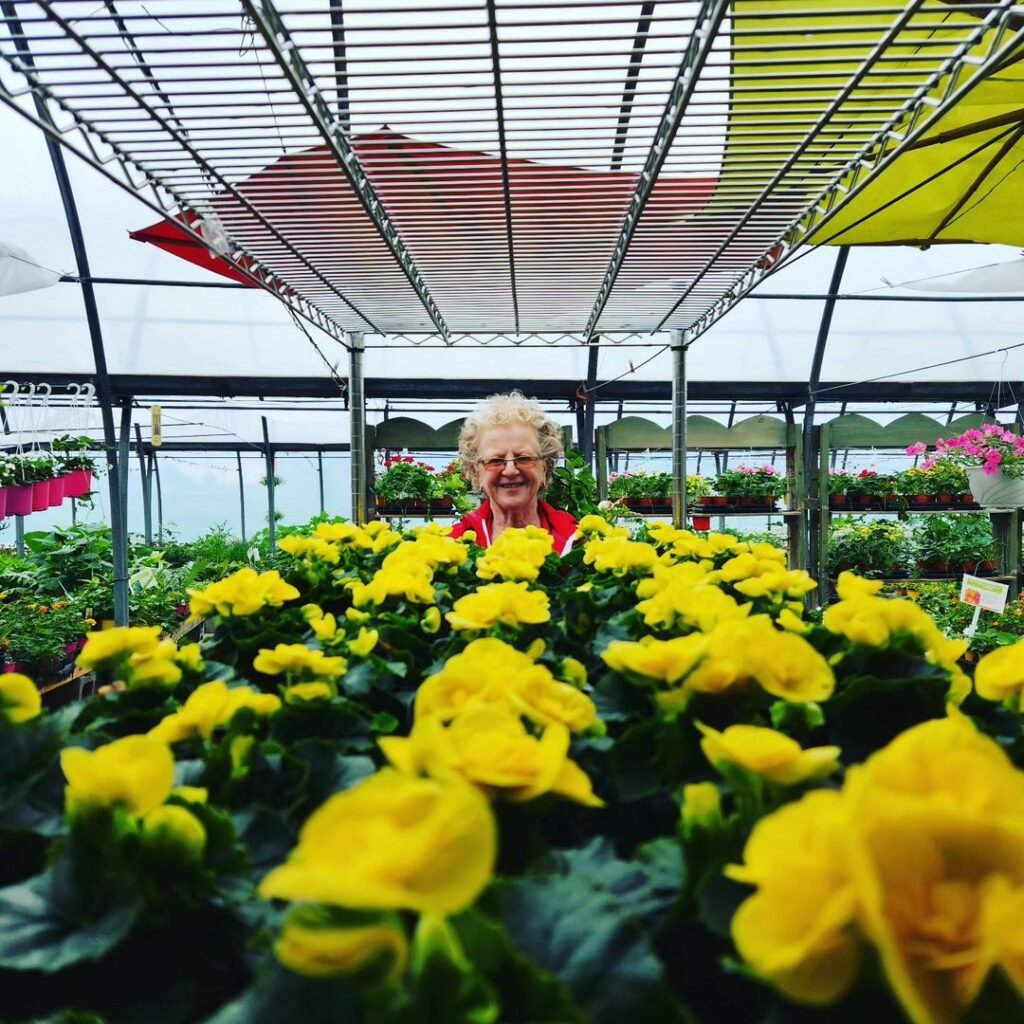

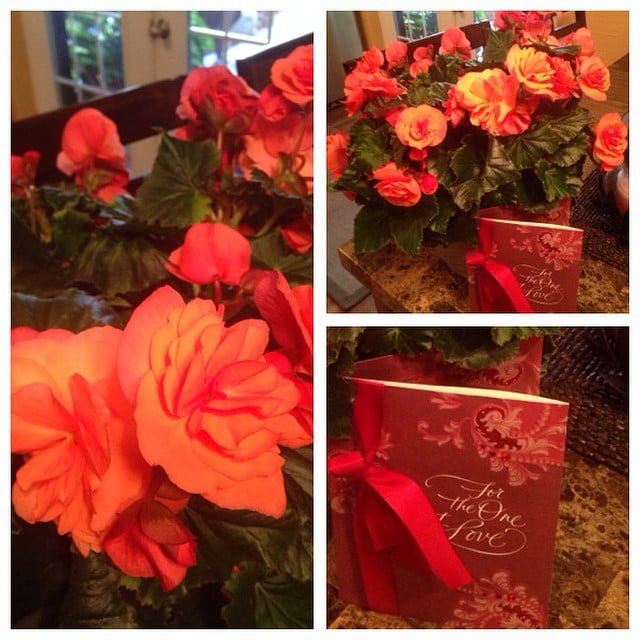
Well-Draining Soil Mix
Creating the right soil environment is crucial for Begonia Solenia’s health and growth. Opt for a well-draining soil mix that allows excess water to escape, preventing root rot. A typical mix includes peat moss, perlite, and a small amount of organic matter.
Soil Preparation:
- Peat-Based Mix: Use a base of peat moss for moisture retention.
- Perlite Addition: Incorporate perlite for aeration and drainage.
- Organic Matter: Include a small amount of organic matter to enhance nutrient content.
- Container Choice: Ensure the pot has drainage holes to facilitate proper water drainage.
By providing the right balance of light and a well-draining soil mix, you’ll lay the foundation for a thriving Begonia Solenia.
Watering Begonia Solenia

Moisture Management
Watering is a critical aspect of Begonia Solenia care, and finding the right balance is key to its well-being. Follow these guidelines to ensure optimal moisture levels for your begonia.
Watering Guidelines:
- Consistent Moisture: Keep the soil consistently moist but not waterlogged. Begonia Solenia prefers a slightly damp environment.
- Top Inch Test: Check the top inch of soil before watering. If it feels dry to the touch, it’s time to water. Avoid letting the soil dry out completely.
- Avoid Waterlogging: Ensure proper drainage to prevent waterlogging, which can lead to root rot. Use containers with drainage holes and well-draining soil.
- Room-Temperature Water: Use room-temperature water for irrigation, and water directly into the soil to prevent fungal issues on leaves.
- Adjust During Dormancy: In the dormant period or during winter, reduce watering frequency to accommodate the plant’s slowed growth.
Begonia Solenia Humidity and Temperature
Creating the Ideal Microclimate
Begonia Solenia, originating from tropical regions, thrives in environments with moderate to high humidity levels. Crafting the right microclimate by considering humidity and temperature is crucial for the well-being and lush growth of this begonia species.
Humidity Requirements
- Moderate to High Humidity: Aim to keep the humidity levels around 50% to 80%. You can increase humidity by placing a humidifier nearby, using a humidity tray, or grouping plants together.
- Leaf Mistings: Regularly mist the leaves with room-temperature water, especially during dry periods or when the indoor air is exceptionally dry.
Temperature Considerations
Begonia Solenia is accustomed to warm temperatures, reflecting its tropical origins. Providing a stable and moderate temperature range enhances its overall health and promotes vigorous growth.
- Ideal Range: Maintain temperatures between 60°F to 75°F (15°C to 24°C) year-round. Avoid exposing the plant to sudden temperature fluctuations or drafts.
- Protect from Cold Drafts: Begonia Solenia is sensitive to cold drafts. Shield it from chilly air by placing it away from windows, doors, or other sources of drafts during colder months.
By paying attention to both humidity and temperature factors, you’ll create a microclimate that mimics the begonia’s natural habitat, fostering optimal growth and vitality.
Fertilizing Begonia Solenia
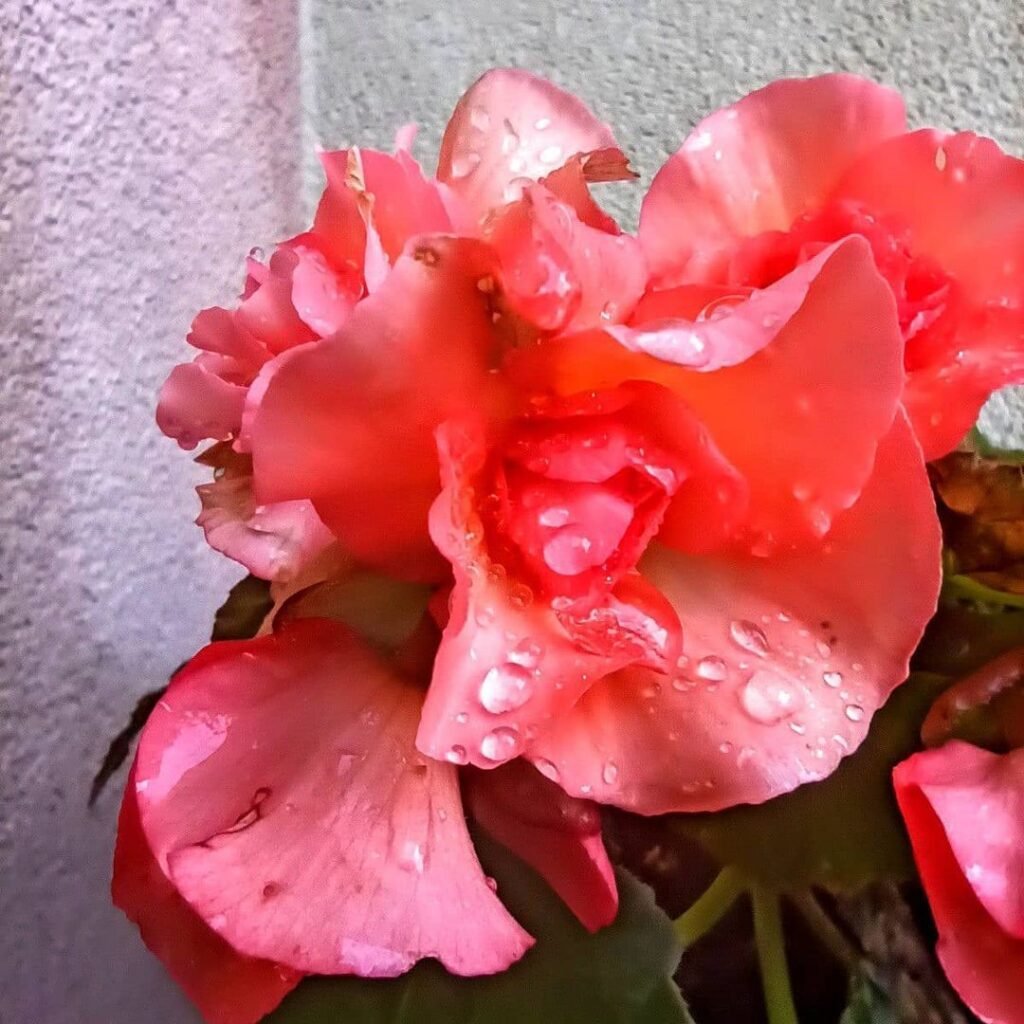
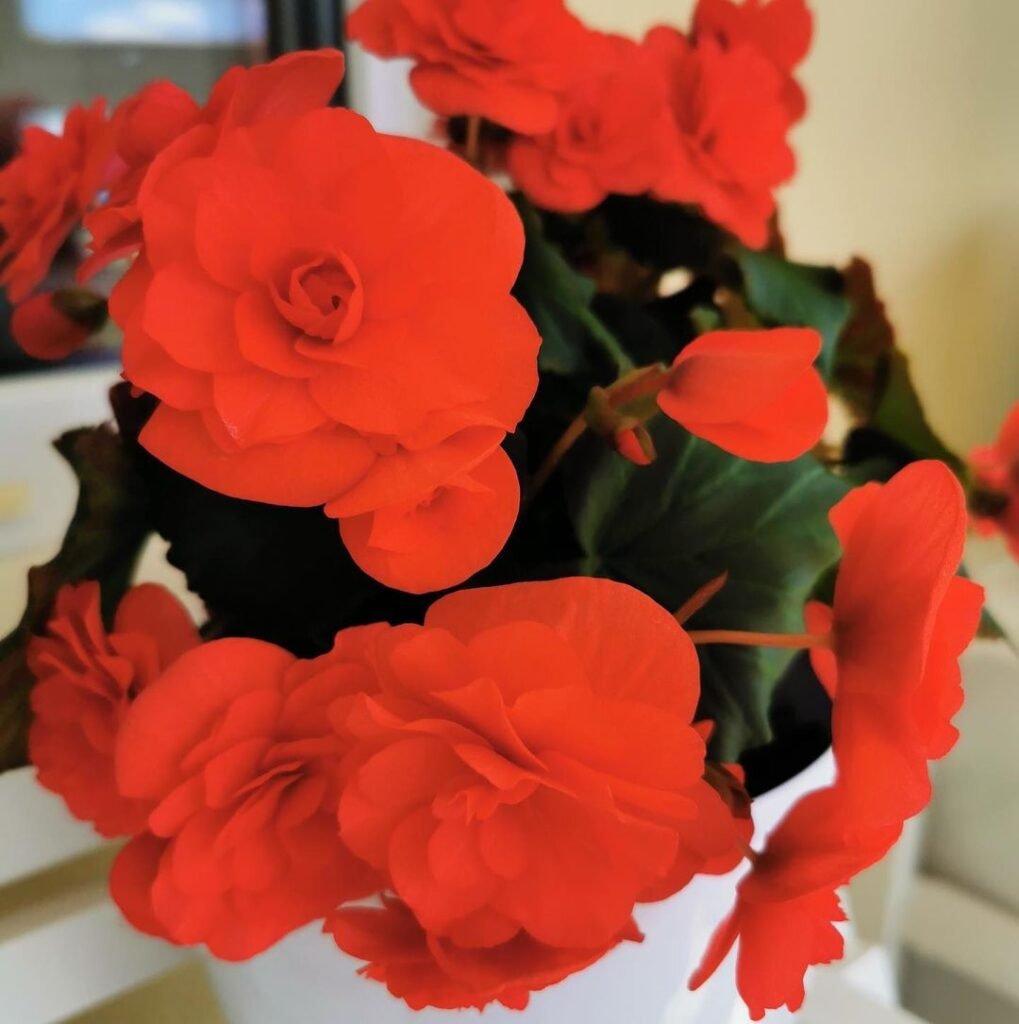
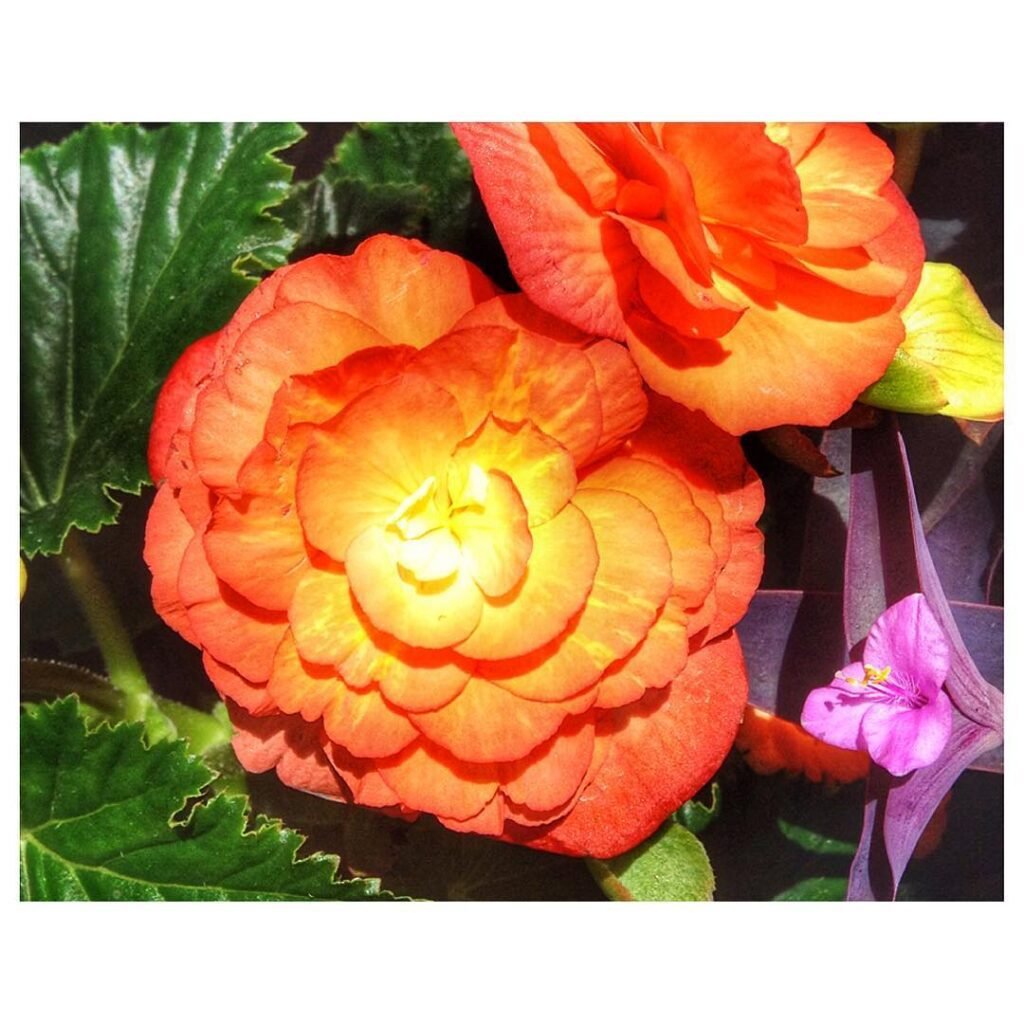
Nourishing for Optimal Growth
Fertilizing is a crucial aspect of Begonia Solenia care, providing the necessary nutrients for vibrant foliage and robust health. Understanding the right fertilizing routine and formulation is key to unlocking the full potential of your begonia.
Fertilizing Schedule
- Balanced Liquid Fertilizer: Feed your Begonia Solenia with a balanced liquid fertilizer every 4-6 weeks during the growing season (spring and summer).
- Dilution Recommendations: Follow the manufacturer’s instructions for dilution, usually halving the recommended strength to prevent over-fertilization.
- Pause in Winter: Reduce or halt fertilization during the dormant period in winter when the plant’s growth naturally slows down.
Monitoring and Adjusting
Regularly monitor the plant’s response to fertilization. If you observe signs of over-fertilization, such as leaf burn or excessive foliage, reduce the frequency or dilute the fertilizer further.
Adjust the feeding schedule based on environmental conditions, as factors like temperature and light intensity influence the plant’s nutrient requirements. A well-fed Begonia Solenia will reward you with vibrant, healthy foliage.
Begonia Solenia Pruning and Shaping
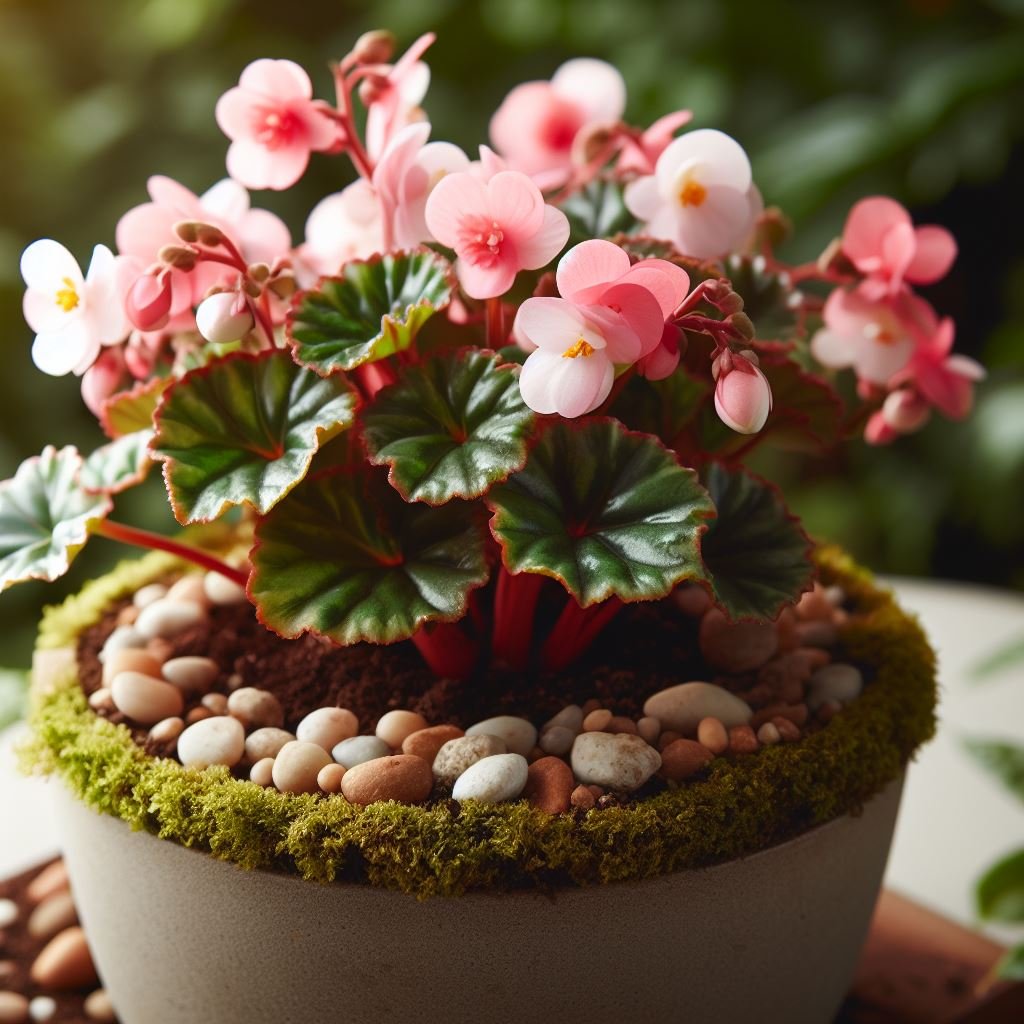
Enhancing Aesthetic Appeal
Pruning is an essential aspect of Begonia Solenia care, contributing to the plant’s overall shape, density, and aesthetic appeal. Knowing when and how to prune ensures a well-maintained and visually pleasing begonia.
Pruning Guidelines
- Remove Leggy Growth: Trim leggy or elongated stems to encourage a bushier, more compact form. This helps maintain an attractive and well-balanced appearance.
- Deadheading: Regularly remove spent flowers to redirect the plant’s energy into new growth and encourage continuous blooming.
- Yellowed Leaf Removal: Trim and remove yellowed or damaged leaves promptly to enhance the overall appearance and prevent potential disease spread.
Shaping Techniques
Begonia Solenia responds well to shaping, allowing you to sculpt its form to your preference. Consider these shaping techniques:
- Topiary Style: Create a topiary effect by selectively pruning and shaping the foliage. This adds an artistic element to your plant’s presentation.
- Bushy Growth: Encourage a bushier growth habit by pruning back longer stems, especially if your Begonia Solenia tends to become leggy.
- Balancing Act: Aim for a balanced and symmetrical shape, ensuring that the plant maintains a pleasing appearance from all angles.
Care Tip: To prevent the spread of diseases during pruning, sanitize your pruning tools with rubbing alcohol before and after each use. This simple step helps keep your Begonia Solenia healthy and disease-free.
Begonia Solenia Propagation and Repotting
Multiplying Your Green Treasure
Propagation and repotting are essential aspects of Begonia Solenia care, allowing you to expand your begonia collection and ensure the continued vitality of your existing plants.
Propagation Methods
Begonia Solenia can be propagated through stem cuttings. Here’s a step-by-step guide:
- Select Healthy Stems: Choose stems that are healthy, disease-free, and have at least two nodes.
- Cutting Preparation: Use a clean, sharp knife or scissors to take a cutting, ensuring it’s around 4-6 inches in length.
- Remove Lower Leaves: Trim away the leaves from the lower part of the cutting, leaving only a couple of leaves at the top.
- Rooting Medium: Plant the cutting in a well-draining rooting medium, such as a mix of perlite and peat moss.
- Provide Indirect Light: Place the cutting in an area with bright, indirect light. Avoid direct sunlight to prevent stress.
- Maintain Moisture: Keep the rooting medium consistently moist, but not waterlogged, during the rooting process.
- Transplanting: Once roots are well-established, transplant the new Begonia Solenia into a larger pot with regular potting mix.
Repotting Guidelines
Repotting is necessary to refresh the soil, provide more space for growing roots, and prevent the plant from becoming root-bound.
- Young Plants: Repot young Begonia Solenia plants annually in the spring to encourage healthy growth.
- Mature Plants: Repot mature plants every 2-3 years. Check the roots for any signs of overcrowding or disease during the process.
- Choose the Right Time: The best time for repotting is during the growing season, typically in spring or early summer.
- Gentle Handling: Be gentle when removing the plant from its current pot to avoid damaging the roots.
- New Pot Selection: Choose a new pot that is slightly larger than the current one, with drainage holes to prevent waterlogging.
Care Tip: When repotting, inspect the roots for any signs of pests or diseases. Trim away any damaged or rotting roots before placing the plant in its new container. This precautionary measure ensures the continued health of your Begonia Solenia.
Begonia Solenia Seasonal Care
Adapting to Nature’s Rhythms
Understanding the seasonal needs of Begonia Solenia is crucial for providing tailored care throughout the year. This helps your begonia thrive during periods of active growth and rest.
Spring and Summer Care
- Increased Watering: During the growing season, increase watering frequency to keep the soil consistently moist.
- Fertilization: Feed with a balanced liquid fertilizer every 4-6 weeks to support robust growth and vibrant blooms.
- Pruning for Shape: Perform shaping and pruning activities to maintain an attractive form and encourage continuous flowering.
Fall Preparation
- Reduced Watering: As the days shorten and growth slows, reduce watering frequency to prevent waterlogged soil.
- Fertilizer Adjustment: Gradually reduce fertilization in preparation for the plant’s dormant period.
- Inspect for Pests: Before bringing plants indoors (if applicable), inspect them for pests or diseases.
Winter Dormancy
- Limited Watering: During the dormant phase, reduce watering significantly as the plant’s growth naturally slows down.
- Cooler Temperature: Allow the plant to experience slightly cooler temperatures, but avoid exposure to cold drafts.
- Minimal Fertilization: With reduced growth, minimize or halt fertilization until the arrival of the next growing season.
By adapting your care routine to the changing seasons, you provide Begonia Solenia with the optimal conditions for growth and rest, promoting overall health and longevity.
Begonia Solenia Companion Plants
Creating Harmonious Plant Pairings
Choosing the right companion plants for your Begonia Solenia enhances the visual appeal of your garden or indoor space and can even offer additional benefits such as pest repellent properties.
Complementary Pairings
- Impatiens: The vibrant blooms of impatiens complement the colorful flowers of Begonia Solenia. Both thrive in similar conditions.
- Ferns: The feathery foliage of ferns provides an elegant contrast to the bold leaves of Begonia Solenia. They also share similar humidity preferences.
- Coleus: The varied foliage colors and patterns of coleus add visual interest when planted alongside Begonia Solenia. Ensure both receive appropriate light levels.
Container Gardening Ideas
- Hanging Baskets: Combine Begonia Solenia with trailing plants like ivy or trailing lobelia for an eye-catching hanging basket display.
- Shade-Loving Plants: Choose shade-loving companions such as hostas or astilbe to create a lush and dynamic shade garden.
- Varied Heights: Pair Begonia Solenia with taller plants like heuchera or caladiums to create a layered and visually appealing container arrangement.
If you’re thinking of extending your begonia plant family, read up on begonia listada care and eyelash begonia care to help you decide on the next addition to your squad.
Care Tip: When selecting companion plants, consider their light and water requirements to ensure harmonious care. Avoid pairing plants with conflicting needs, such as those with drastically different sunlight preferences. This thoughtful pairing will result in a stunning and well-balanced plant ensemble.
Pest Control Tips for Begonia Solenia
Safeguarding Your Green Oasis
Keeping your Begonia Solenia free from pests is crucial for its health and vitality. Implementing effective pest control measures ensures that your begonia remains a thriving centerpiece in your plant collection.
Common Pests
| Pest Type | Identification | Control Measures |
|---|---|---|
| Aphids | Small, soft-bodied insects that cluster on new growth. | – Prune affected areas. – Use insecticidal soap or neem oil. |
| Spider Mites | Tiny arachnids that create fine webbing on leaves. | – Increase humidity. – Spray plants with water to dislodge mites. |
| Mealybugs | Cottony, white insects often found in leaf joints. | – Wipe with a damp cloth. – Apply neem oil or rubbing alcohol to affected areas. |
| Scale Insects | Hard or soft scales on stems or leaves, resembling small bumps. | – Scrub with a soft brush. – Apply horticultural oil. |
| Whiteflies | Small, white, moth-like insects found on the undersides of leaves. | – Introduce natural predators like ladybugs. – Apply insecticidal soap or neem oil. |
Preventive Measures
- Regular Inspection: Regularly inspect your Begonia Solenia for early signs of pests. Quick intervention prevents infestations.
- Isolation: Isolate new plants before introducing them to your collection to prevent the spread of potential pests.
- Natural Predators: Encourage natural predators like ladybugs or predatory mites to control pest populations.
- Quarantine Protocol: Quarantine any newly acquired plants for a few weeks to monitor for potential pests before placing them among your existing plants.
Care Tip: To deter pests, keep your begonia healthy and stress-free. Well-maintained plants are less susceptible to infestations. Additionally, periodically clean the leaves with a gentle spray of water to remove dust and potential pests.
Reviving a Sick or Wilting Begonia Solenia
Nurturing a Comeback
A wilting or sick Begonia Solenia can be distressing, but with prompt action and the right care, you can revive your beloved plant. Here’s a step-by-step guide to nurse your begonia back to health.
Identifying the Issue
- Overwatering: Yellowing leaves and root rot may indicate overwatering. Adjust your watering routine and ensure proper drainage.
- Underwatering: Wilting and dry, crispy leaves suggest underwatering. Increase watering frequency and ensure soil moisture.
- Pest Infestation: Check for signs of pests such as discolored or distorted leaves. Implement appropriate pest control measures.
- Disease: Yellow spots, blackened leaves, or fungal growth may indicate disease. Isolate the plant, treat with fungicide, and prune affected areas.
Reviving Steps
- Assess Root Health: Gently remove the plant from its pot and inspect the roots. Trim any rotting or damaged roots with sterile scissors.
- Repot if Necessary: If the roots appear healthy but the soil is waterlogged, repot the begonia into fresh, well-draining soil.
- Adjust Watering: Modify your watering routine based on the identified issue, whether it’s overwatering or underwatering.
- Provide Adequate Light: Ensure your Begonia Solenia receives the right amount of light. Adjust its placement to meet its specific light requirements.
- Boost Humidity: If your home is too dry, increase humidity around the begonia by misting its leaves or placing a humidity tray nearby.
- Fertilize Appropriately: If the plant shows signs of nutrient deficiency, apply a balanced liquid fertilizer according to the recommended schedule.
- Monitor Progress: Regularly check the plant’s progress. Be patient, as recovery may take some time.
Care Tip: When reviving a sick begonia, start with small adjustments. Sudden changes can stress the plant further. Monitor its response and make additional changes as needed.
Conclusion
Celebrating the Beauty of Begonia Solenia
In conclusion, Begonia Solenia is a captivating plant that rewards dedicated care with stunning blooms and vibrant foliage. By understanding its specific needs, from light and humidity preferences to fertilization and pest control, you can create an environment where your begonia thrives.
Remember to adapt your care routine based on the changing seasons, provide proper companionship through thoughtful plant pairings, and intervene promptly if your begonia shows signs of distress. With the right care and attention, your Begonia Solenia will continue to be a beautiful and enduring presence in your green space.
FAQs
Is Begonia Solenia suitable for beginners?
Yes, Begonia Solenia is a relatively beginner-friendly plant. With proper care, attention to its specific needs, and the willingness to adapt your care routine based on its response, beginners can enjoy the beauty of this begonia.
How often should I fertilize my Begonia Solenia?
During the growing season (spring and summer), fertilize your Begonia Solenia every 4-6 weeks with a balanced liquid fertilizer. Reduce or halt fertilization during the dormant period in winter.
Can Begonia Solenia tolerate direct sunlight?
While Begonia Solenia prefers bright, indirect light, it can tolerate some direct sunlight. However, prolonged exposure to harsh sun can scorch its leaves. It’s best to provide filtered sunlight for optimal growth.
What are common signs of overwatering in Begonia Solenia?
Signs of overwatering in Begonia Solenia include yellowing leaves, wilting, and the presence of root rot. Adjust your watering routine, ensure proper drainage, and allow the soil to dry slightly between waterings to address this issue.

Writer/Green Thumb/Explorer – Rooted deep in the rich soils of Devon, I’ve cultivated a vast expertise in plant care, helping greenery thrive in homes across the UK. When I’m not crafting detailed plant care guides, I’m journeying through the lush landscapes of the West Country, unearthing nature’s secrets and sharing them with fellow plant enthusiasts. Every leaf has a story, and I’m here to tell it.





